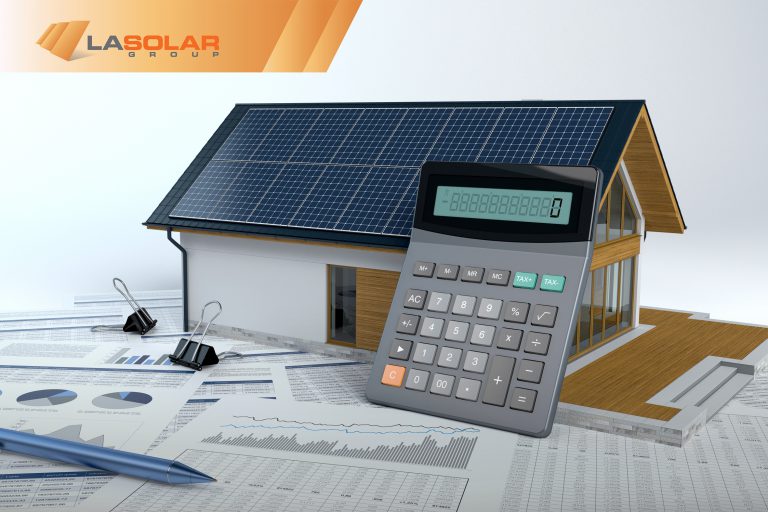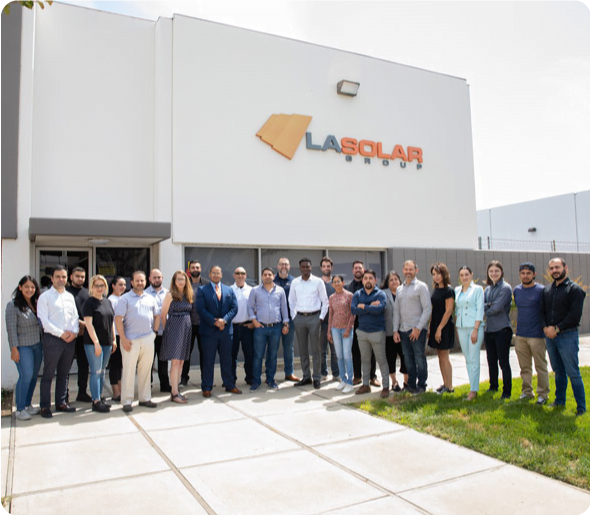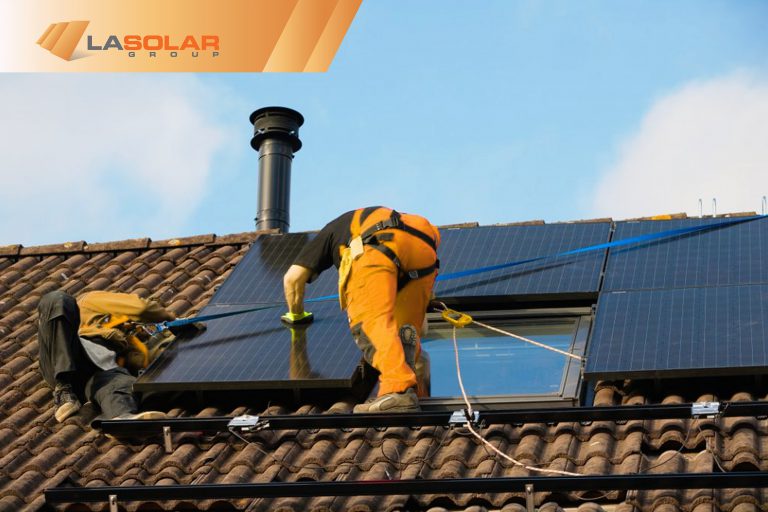Set up solar panels
What is a Solar Panel?
The primary sunlight is the primary source for solar power. PV panels, also known as solar, are used to convert solar energy that is gathered from the sky into electricity. They convert energy particles known photons into electricity that is able to increase voltage sources.
Solar panels are a great option for many purposes for remote power systems for cabins as well as remote sensing. You can also generate electricity with commercial or residential solar electric systems.
This page will explain the advantages and technologies from solar panels. Learn how solar panels work and where you can purchase them.
Solar Panel Installation has been in use for more than 100 years. Solar Panel Setup was originally used to generate steam, which could then be utilized to power machines. Sunlight could not be turned to electric power when Edmond Becquerel established the “photovoltaic effects.”
Charles Fritts, who discovered the photovoltaic effect in 1893 created the first solar cell. It was made by putting selenium sheets on thin layers of gold. This simple start would eventually lead to the technology we call solar arrays.
Russel Ohl was an American inventor working for Bell Laboratories. He was the inventor of his first solar panel made of silicon. The same company produced the first solar panel in 1954 due to Ohl’s invention. The first time that people were able to use solar panels was on space satellites. The 1970s were where the first exposure of most people the solar power system was through their calculator.
Solar panels as well as complete solar panel systems are used today to power many applications. Yes, calculators still use solar panels constructed of solar cells. They are used to supply solar power to whole commercial and residential buildings, such as Google’s California headquarters.
Setting Up Solar Panels
Solar panels absorb sunlight as clean, renewable energy and convert it into electricity which can be used to power electrical loads. Solar panels consist of many individual solar cells comprised of layers of silicon (which provides the negative charge) and Phosphorus (which releases an electric charge). Photons are captured by solar panels, which generate electricity. Photons that strike on the surface of the panel create energy that allows electrons to escape their orbits in atomic space. The energy then releases into an electric field by the solar cells, which draws these electrons into the direction of a current. It is called the Photovoltaic Effect is the name of this entire process. The average house has enough space on the roof to support enough solar panels to generate enough power to satisfy every need.
Solar arrays can produce energy during the daytime when you connect it to the grid. The energy generated can be used at night. Solar generator owners can get money through net metering programs when their system produces more power than what is utilized in the home. Battery banks, charge controllers inverter and charger are essential components of off grid solar systems. The charge controller sends directly current (DC) power directly to solar panels. The battery bank draws power to the inverter. The inverter transforms DC energy into AC which can be used for other than-DC appliances. The solar arrays are increased to meet the most demanding electrical load requirements with an inverter. AC currents power loads in commercial and residential buildings as well as boats and recreational vehicles, remote cabins and cottages and homes remote traffic control telecom equipment, and gas flow monitoring.
Benefits of Solar Panel system
- Solar panels are an effective and efficient method of generating electricity for various reasons. Off-grid living is the obvious. Living off grid is when you live in an area that isn’t linked to the main electric utility grid. The solar power system is perfect for cabins and homes in remote locations. There is no need to pay high costs for the installation of cables or utility poles from the nearest main-grid access point. If properly maintained solar electric systems will be less expensive and can provide the power for up to three decades.
- In addition to the fact solar panel systems can also be used to power your home, the best feature of solar panel installation is the fact that they are green and renewable. It is becoming more urgent to do everything that we can to reduce the atmospheric pressure from greenhouse gas emissions. Solar panels do not have moving parts and therefore require minimal maintenance. Solar panels are robustly constructed and last for a long time if properly maintained.
- The final, and certainly not least, advantage that solar panels offer is that after the initial installation cost has been paid, the electricity generated for the remainder of the life of the system that could last from to 15 years dependent on how efficient your system performs, will be completely free. Grid-tie solar power system owners enjoy the benefits of as soon as their solar power system comes up and running. This can reduce monthly electric bills, or earn them additional income from the electric firms.
Solar panels can be used to generate electricity in many different ways. There are many benefits to mention. You’ll learn a lot about the versatility and convenience of solar power when you browse through our website.
Guide to setting up a solar power unit.
Step 1: Collect the key components for solar power
It is the first thing to do to gather the necessary components for a solar-powered system. There are four main items you will need: a solar panel, charge controller and inverter. You will also need the breaker and meter as well as an connector MC4 and fuse. It is essential to read the instructions for your solar panel module.
Step 2: Determine the power load
It is crucial to estimate the amount of electricity that you consume in your home prior to starting the solar installation process. It’s not difficult. All you have to do is take off all the appliances you use every day like lights, fans, televisions and even lights. Calculate the duration that these appliances are in operation each day. To check the power consumption and duration of your household electric appliances, consult their specifications chart.
Calculate the Watt-Hour using the duration of the appliance’s runtime by the power rating. The process is the same for every appliance. After that, add up the individual watt-hours and you will get the total. A calculator online that calculates off-grid loads can simplify the process.
Step 3. Charge the battery
One of the biggest issues with solar power is the inability to provide electricity once the sun goes down. This issue can be easily resolved by using an lithium-ion battery or lead-acid. The battery, regardless of whether it’s lead-acid or lithium-ion can store solar energy during the day and then discharges it in the evening. If you pick the highest battery, it will give you a continuous supply. To monitor the charge of your battery, you will need a power control unit. They are situated between the panels of the battery. They typically feature an LED light that indicates the status of charging the battery and adjusts the flow of power to it.
Step 4: Install the inverter
While solar arrays generate electricity using direct current electrical appliances require power in the form of AC or alternating current (AC). Inverters are devices that lets you make use of electric devices without the need for adaptors. There are various kinds of inverters, including modified sine-wave and square wave inverters. Modified sine waves are compatible with certain appliances, however square waves will not work with all devices. A sine wave convertor that is pure is the best option for solar systems.
Step 5: Attach the solar panels to your roof
After the battery and controller are in place, you can mount your solar panel. The best place for the panels is on the roof, or anyplace else that gets the sun’s radiation. Either make your own mounting stand , or purchase it from the market. Mounting stands must be tilted approximately to equal the angle of latitude at your place of residence. Setting the solar panel correctly is vital for their functioning and maintenance. It is important to ensure the solar panels face the sun throughout the day.
The solar panel should be wired in the final phase. A small junction box can be found at the back of the solar panel. It’s possible to observe the junction box’s positive and negative indications of the polarity. The junction box can include terminal wires as well as an MC4 connector, if it is large. If you have a small solar panel, the junction box has to be aligned to external wires. The red and black wires are for positive and negative terminal connections.
Step 6 Join solar panel to battery
The solar panels need to be connected to the battery. They are joined in certain PV systems, to make it unnecessary to perform any additional work. If you’re provided with multiple units, it is important to connect them in series and parallel. An asynchronous connection created by connecting the positive terminal of a device to the terminals of another device. To make a parallel connection to connect one device’s negative terminal to a different device, and so on.
Step 7: Setup is for the inverter/battery
Without stands for the inverter and battery your solar home system isn’t fully functional. You can choose to construct the stands yourself or buy the stands. After you have the positions for the inverter and battery set , you are now able to begin wiring. Wire the controller first. The controller will be connected to the solar panels through this connection. Another connection joins the controller to the battery. The final connection connects the controller to the DC load connection.
An MC4 connector is required to connect the solar panel to charger. Once the controller is linked to the battery the controller’s LED lights will be lit. The inverter terminal has to connect the batteries terminal.
5 Steps for Solar Panel Installation
You can reduce the dependence of the traditional providers of services by introducing an at-home solar powered energy framework for solar power. This will balance the greater portion (or total) of your energy bill each month. It will also help you manage your environmental impression and create greener, more efficient energy networks.
It’s quite ridiculous to think that all of the factors that determine the success of a solar-powered enterprise have little to do with the establishment itself. Before we go into the details of how to set up sun-powered chargers, here are some nuances.
To introduce solar-powered chargers, it is necessary to be able to comprehend the basics of sun-oriented design, innovation and design. The average person will need to steer clear of setting up a solar power charger setup at home, and instead work with skilled local installers of [xfield-company]. A properly planned PV framework will offer more reserves than DIY solar establishments and will save you money in the long-term.
It is essential to understand that installing solar power generators is not something that can be done in a single day. Even if you have the best sunlight-powered chargers, there are still crucial steps that must be completed to ensure a reliable, efficient, and environmentally-friendly power system.
These are the steps to install a Solar System.
1) Conduct a Site Survey with our Engineer
Once you’ve chosen and signed a contract to [xfield-company], the most trusted residential solar installer our engineer will visit your residence to evaluate the electrical system in your home and verify that it is compatible with your 60W solar panel design. Our engineer can either be an independent or employee.
It is possible that our engineer may advise you to upgrade or replace the old electrical system if it’s not in good condition. This indicates that your new solar system will need more power than your current one.
The engineer of [xfield-company] will inspect your roof and examine your electrical system. Our engineer will also need to ensure that the roof is strong enough to support the load and structural strength that the panels. Local installers will tell you whether you require specific mounting systems like flat roofs.
Solar systems work according to how they are designed. This is the reason it is important to hire a reliable Solar engineer with [xfield-company].
2) Get the right permits
There are some administrative hurdles that need to be cleared before installing solar panels. It is necessary to obtain all permits and documents to ensure that your solar panel installation meets all local safety regulations. It’s difficult to imagine how many headaches can be caused by the installation of a solar panel that isn’t allowed.
While this may seem overwhelming, there are a lot of aspects involved in the installation of solar panels. A majority documentation is managed by our company. Although you don’t need to sign anything, it is crucial to know what’s happening behind the in the background.
Here are the documents your solar installer will file:
- You can obtain local permit for construction and electrical work for your local area
- A contract for interconnection with local utilities. This is basically permission from your utility for solar installation and enrollment in net metering.
- Applications for federal and state incentive programs that can reduce costs of installing solar panels.
- You could be eligible to receive tax credits, rebates or financial aid to cover the cost of installation by filling out this form.
Your solar contractor will have to take some time to complete all forms. It may take several days for your government review all the information. To ensure that the process is moving well, it’s an excellent suggestion to communicate with your solar provider and receive regular updates. The squeaky wheels are the source of some grease but the solar companies are often busy with business.
3) Buy the Right Equipment
Once you’ve completed all paperwork and permits After you have completed all paperwork and permits, you and your [xfield-company] solar installer can order your equipment.
You have now selected the type and the number of solar panels you will require as well as the ideal inverters and solar cells that will fit your home. These options are typically mentioned in the solar plan that is sent to you before you sign the contract.
It is essential to study the various alternatives and learn how solar panels function. The solar installer at [xfield-company] will be able to help you select the right equipment for you regardless of whether or not you are looking to purchase the highest efficiency or the most affordable solar panel.
The name you provide will be added as a reference for our installer once you have purchased your solar system. This basically means that your solar panels are installed by our installer once the distributor arrives.
4) Install Your Solar Panels
The big day has arrived. Your [xfield-company] installer will arrive and prepare your roof. This includes ensuring that all tiles and shingles are securely fixed. The installer will then connect the wiring needed to connect the solar panel of your home to the grid.
The installer of our company will install brackets to secure the solar panels position after connecting the wires. The panels are then put onto the rack. Our installer will also install a battery power pack should you have one.
The most frequently-asked question about solar panel installation is the time it takes. It will depend on how big your home is , as well as how large the solar panel installation will be however, it is expected to take anywhere between two and three days.
This step should be easy If your solar system has been correctly designed and planned.
5) Get your system approved.
[xfield-company] installer will “flip the switch” and turn on the system after it’s installed. Before you turn on the solar system, a representative of the city may be required to look over and accept it. This is known as permit-to-operate (PTO). It is a simple safety measure to ensure there are fresh eyes to examine the wiring.
To interconnect the system to the grid, you will require an official for your provider. This lets you draw power when needed and then return excess energy to your grid. Credit can be obtained from your utility company via net metering.




